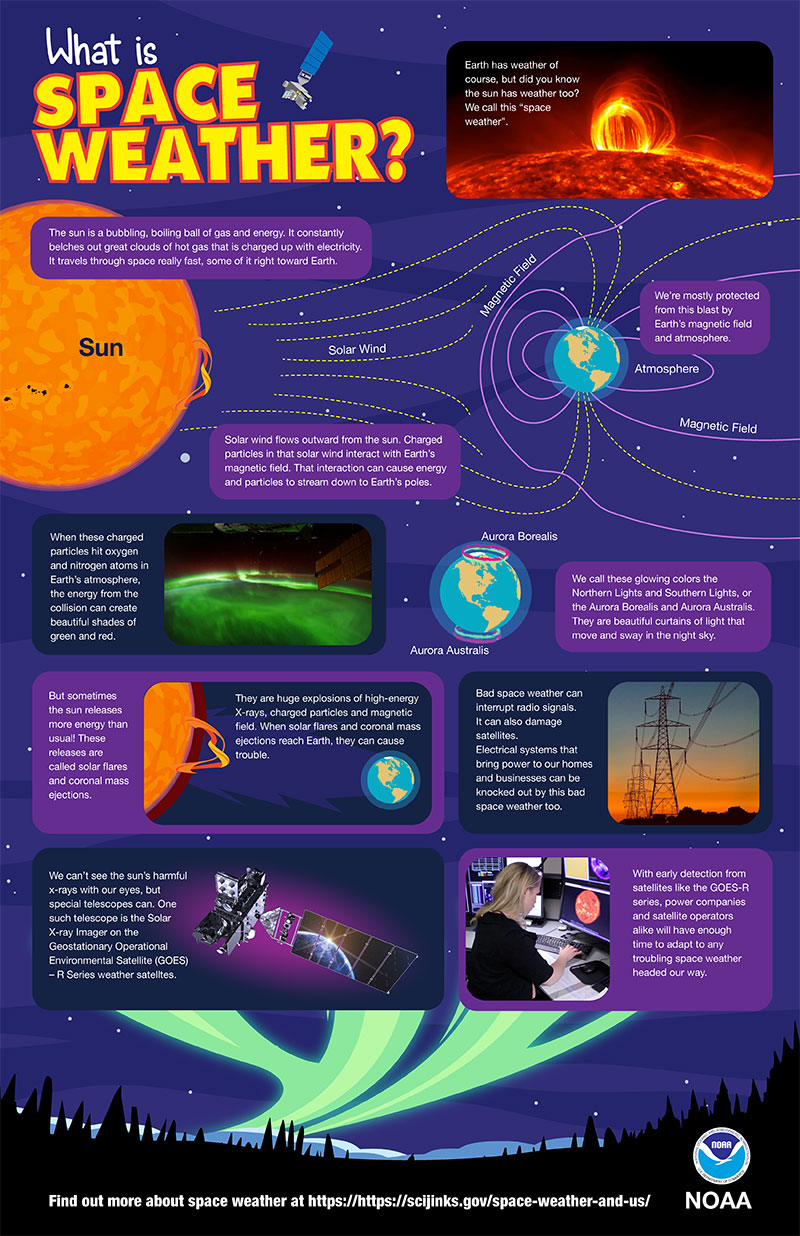Watch this video to learn about space weather! Click here to download this video (1920x1080, 141 MB, video/mp4).
Download a poster version of this video!

Click the above image to download.
Video transcript
What Is Space Weather?
When you think of weather, you probably think of Earth’s weather; snow, rain, and of course, sunshine.
Thank goodness we only have Earth's weather to worry about, right?
Actually, that’s not quite true. Did you know the sun has weather too? We call this “space weather”.
The sun is a bubbling, boiling ball of gas and energy. It constantly belches out great clouds of hot gas that is charged up with electricity.
This stuff travels through space really fast, some of it right toward Earth.
This means that Earth’s weather happens inside the sun’s weather!
Thank goodness we’re mostly protected from this blast by Earth’s magnetic field and atmosphere.
Solar wind flows outward from the sun. Charged particles in that solar wind interact with Earth’s magnetic field. That interaction can cause energy and particles to stream down to Earth’s poles.
When these charged particles hit oxygen and nitrogen atoms in Earth’s atmosphere, the energy from the collision can create beautiful shades of green and red.
We call these glowing colors the Northern Lights and Southern Lights, or the Aurora Borealis and Aurora Australis. They are beautiful curtains of light that move and sway in the night sky.
But sometimes the sun releases more energy than usual!
These sudden and intense hiccups and burps are called solar flares and coronal mass ejections.
These are huge explosions of high-energy X-rays, charged particles and magnetic field.
When the sun’s burps of X-rays and charged particles and magnetic field reach Earth, they can cause trouble.
"Bad space weather" can interrupt radio signals. It can also damage satellites.
Electrical systems that bring power to our homes and businesses can be knocked out by this “bad space weather” too.
That is why the GOES (short for Geostationary Operational Environmental Satellite) has instruments like the Solar X-ray Imager to monitor the space around Earth for an increase in high-energy particles from the sun.
We can’t see the sun’s harmful x-rays with our eyes, but these special telescopes can.
Forecasters at the Space Weather Prediction Center analyze these observations and issue alerts and warnings about space weather that could harm satellites and the power grid.
With early detection from satellites like the GOES-R series, power companies and satellite operators alike will have enough time to adapt to any troubling space weather headed our way.
Find out more about space weather at NOAA SciJinks.




